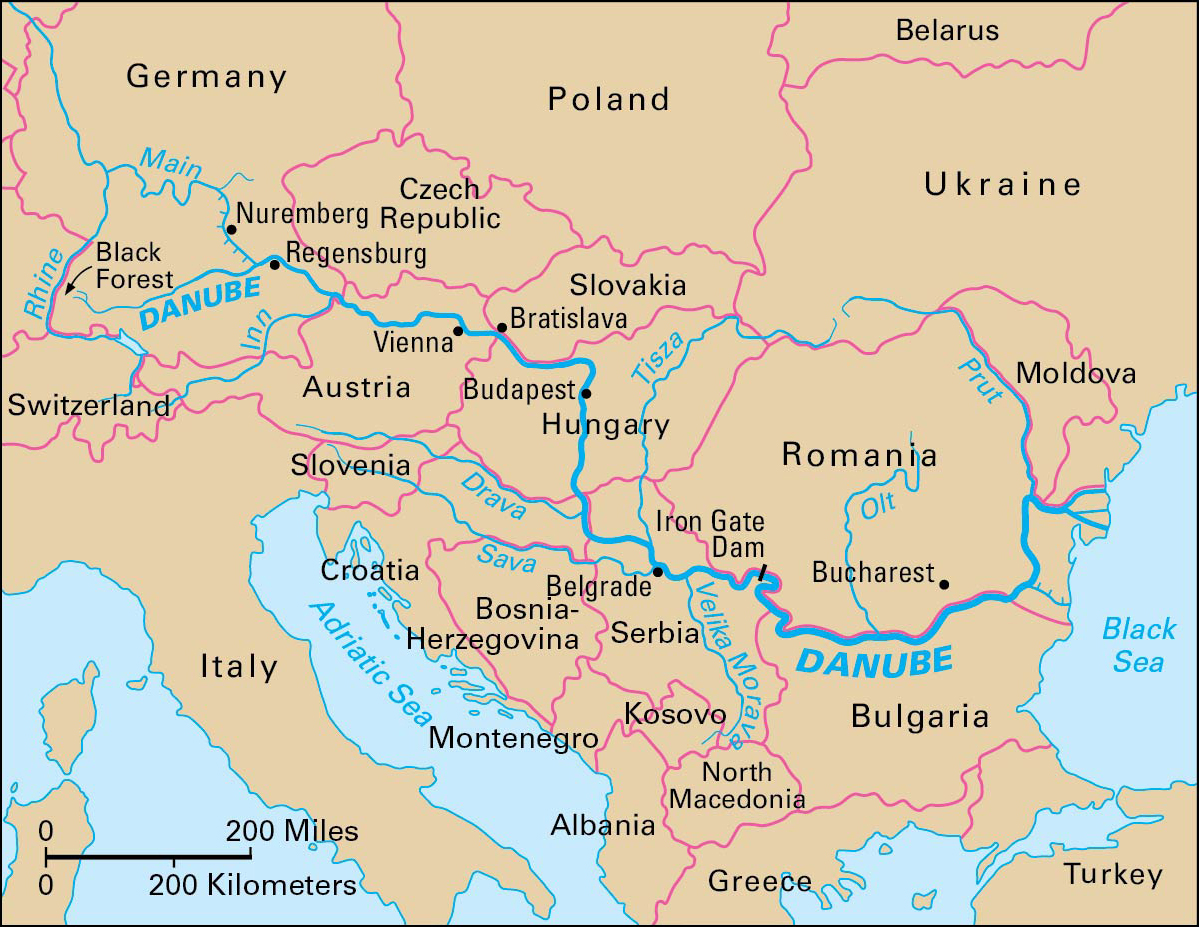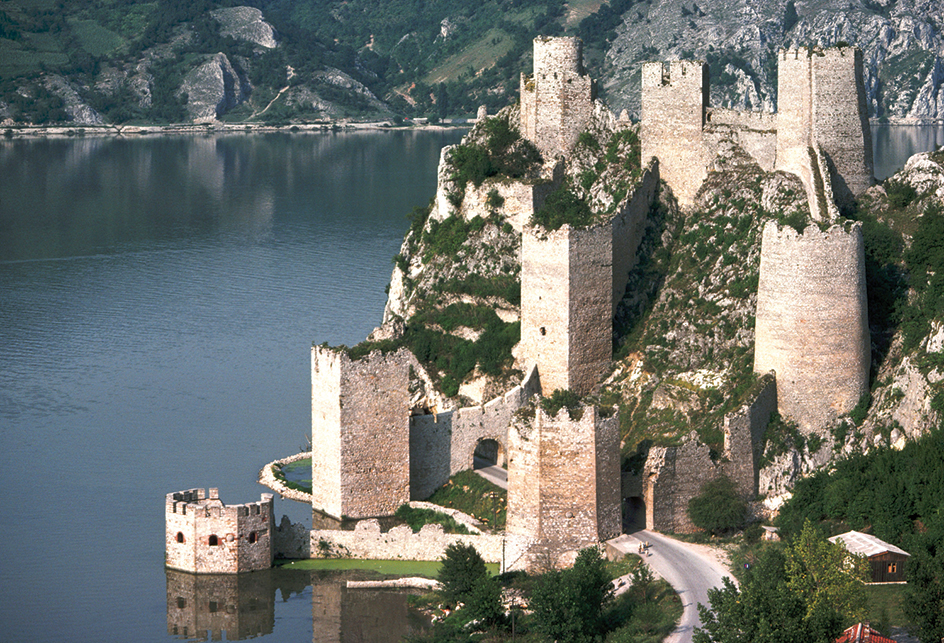Danube << DAN yoob >> River is the second longest river in Europe. Only the Volga River is longer. The Danube flows 1,770 miles (2,850 kilometers) from southern Germany to eastern Europe. The river drains about 315,000 square miles (815,800 square kilometers) of land. It has the largest volume of flow of any European river. The river is called the Donau in Germany and Austria, the Dunav in the Balkans, the Dunaj in Slovakia, and the Dunaerea in Romania and Moldova.

The Danube begins at the merger of two small rivers in the Black Forest in Germany. It winds east through Germany and Austria and along part of the border between Slovakia and Hungary. The Danube curves south near Budapest, Hungary. It flows through Hungary, forming a portion of the border between Croatia and Serbia. It turns east and flows across Serbia, then forms part of the border between Serbia and Romania and most of the border between Romania and Bulgaria. It flows north through Romania and splits into three branches before emptying into the Black Sea.
Commercial ships and barges transport large amounts of freight on the Danube. They carry agricultural goods, chemicals, mineral ores, steel, and other products. About 35 major ports lie along the Danube.

Several countries have dams and electric power plants on the Danube. The largest dam is the Iron Gate Dam. It stands at the Iron Gate, a gorge at the border between Serbia and Romania. The power plant of the dam produces electric power for Romania and Serbia. The Danube has become extremely polluted with chemicals and raw sewage. Many canals connect the Danube to other waterways. The Main-Danube Canal, which connects the Danube to the Main River—a branch of the Rhine—was completed in September 1992. This canal makes it possible for ships to travel between the Black and North seas.
